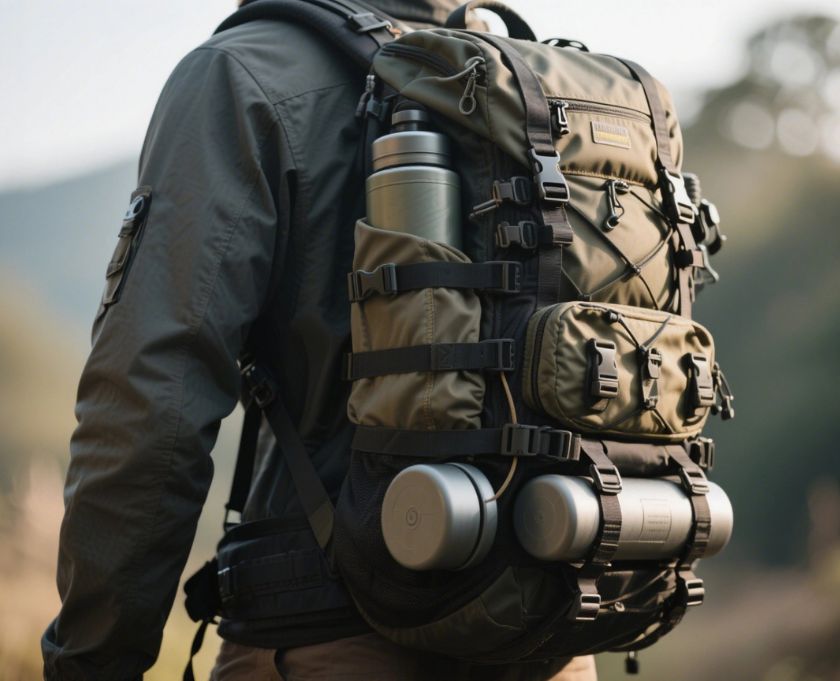Beautiful Plants For Your Interior

Embarking on a backpacking trip means freedom, adventure, and the need for reliable gear. The right travel backpack can make or break your journey, affecting comfort, mobility, and how much you can realistically carry over rugged terrain or dusty trails.
Why the Right Backpack Matters on Long Treks
A quality backpack ensures:
- Balanced load: Distributes most weight to your hips, not shoulders.
- Ventilation: Avoids sweaty back panic in hot or humid zones.
- Access and rigidity: A structured pack stays upright for ease of packing.
Even small discomforts can grow into injuries on long hikes—choosing the correct pack early saves trouble later.
Determining Ideal Backpack Size & Capacity
- Short overnight or weekend trips: 40 L – ideal for minimal gear.
- Multi-day hikes (3–7 days): 50 L – room for food, layers, shelter.
- Extended trekking or cold weather: 60 L – allows bulky clothing or a sleeping bag.
Consider trip duration, climate, and whether you’ll carry cooking gear or just rely on hostels. A properly sized pack helps prevent overpacking.
Fit & Suspension System Essentials
- Torso length fit: Get your pack fitted, not just volume. Being too tall or too short can torture your body.
- Hip belt support: Transfer 70–80% of weight to hips. Padding comfort is essential.
- Ventilated back panel: Mesh panels let air flow, keeping your back cooler.
- Adjustable harness: Accommodates layers or seasonal clothing changes.
Proper fit prevents fatigue and pain, even on rocky or uneven terrain.
Materials & Durability Features
- Ripstop nylon or polyester: Lightweight but tear‑resistant.
- PU or DWR coating: Water repellency for light rain.
- Reinforced stitching at stress points: Backpack corners, seam junctions.
- Durable zippers & buckles: Opt for YKK zips and robust clips.
Your pack may face rain, sharp rocks, tree branches—so materials matter.
Packing Layout & Organization Zones
- Panel-loading (clamshell): Opens like a suitcase—great for gear visibility.
- Top-loading: More compact but less organized—ideal for minimalists.
- Bottom compartment: Good for a sleeping bag or shoes, with a divider.
- Side pockets: Water bottle or trekking pole access.
- Hip-belt pockets: Snacks and small tools for quick retrieval.
Think about how and when you’ll use gear to select the layout style.
Weight Management & Lightweight Tips
- Aim for 40–50% of your body weight as your fully packed load.
- Use compression straps to keep contents tight and centered.
- Choose lighter gear: micro down jackets, compact shelters, minimal electronics.
- Avoid overpacking: bring gear you’ll use daily, skip weight-consuming extras.
Keeping weight controlled enhances mobility and reduces joint stress.
Supportive Extras & Comfort Features
Modern travel backpacks come with helpful extras that improve ergonomics and access:
- Load lifter straps: Angle the pack inward toward your body for better balance.
- Sternum strap: Stabilizes shoulder straps and helps distribute weight evenly.
- Padded shoulder straps: Prevent shoulder fatigue and chafing.
- Hydration reservoir sleeve: Keeps water accessible without opening your pack.
- Side and stretch pockets: Ideal for snacks, maps, sunscreen, and rain covers.
The small touches—when added up—greatly enhance long-distance comfort and accessibility.
Cleaning, Care & Longevity
Backpacking adventures often mean dirt, sweat, and occasional rain. Proper maintenance keeps your pack fresh and functional.
Cleaning Tips:
- Spot clean with mild soap and sponge—avoid harsh detergents.
- Remove frames and wash liners separately if possible.
- Air dry fully before storing to prevent mildew.
- Use rain covers or pack liners to protect interior contents.
Storage Tips:
- Keep in a cool, dry place away from sunlight.
- Loosen straps to avoid permanent bends in padding.
- Check zippers, buckles, and seams regularly for wear.
A well-maintained backpack can last years, even with regular global use.
FAQs: Travel Backpack for Backpacking Trips
Q1: Is a framed or frameless backpack better for backpacking?
A framed pack is best for carrying heavier loads or hiking long distances. Frameless packs are lighter but less supportive.
Q2: Can I carry a 50L backpack as a carry-on?
It depends on the airline. Many 40–45L packs are designed as carry-on compliant. Always check the airline’s size restrictions.
Q3: What’s the best backpack weight limit for long-term use?
Ideally, your fully packed bag should be under 20% of your body weight. This balance helps prevent strain and fatigue.
Q4: Should I get a waterproof backpack for backpacking?
Not necessary if you use a rain cover or pack liner. Few backpacks are truly waterproof, so it’s best to layer protection.
Q5: What are the most durable backpack brands for backpackers?
Osprey, Deuter, Gregory, REI Co-op, and Hyperlite Mountain Gear are known for performance, comfort, and longevity.
Q6: Can I use a hiking backpack for urban travel too?
Yes, if it has organizational features. But sleek, minimalist backpacks may be better for navigating cities and public transport.
Conclusion & Quick Guide Summary
Choosing the right travel backpack for backpacking trips comes down to comfort, size, fit, and durability. Match your pack to your trip type, body frame, and packing habits. Don’t just follow trends—go for what fits your journey.
✅ Quick Criteria Checklist:
- ✔️ Fits your torso and hips well
- ✔️ Capacity fits your trip (40–60L)
- ✔️ Durable material with water resistance
- ✔️ Organized for your packing style
- ✔️ Lightweight but supportive